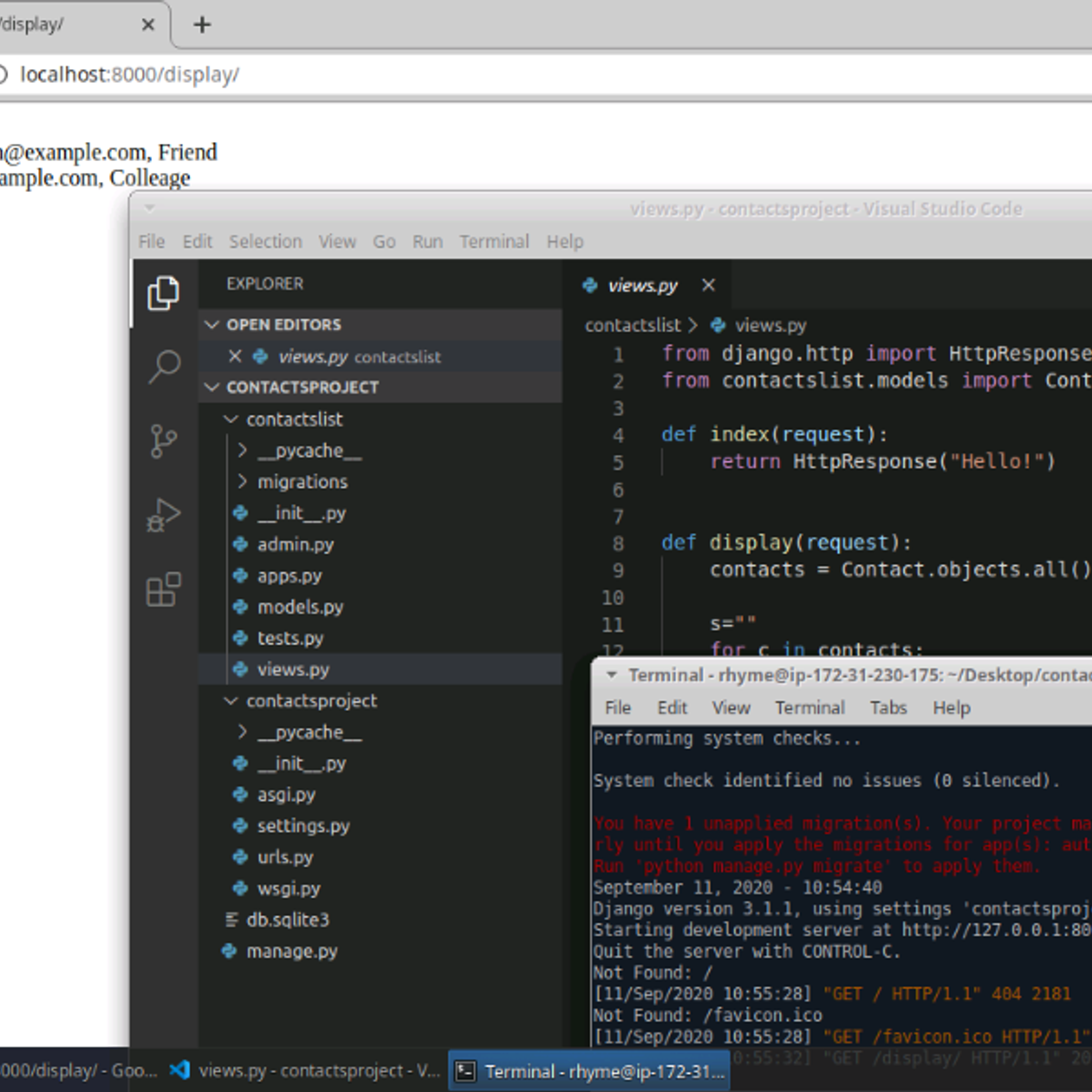Back to Courses









Computer Science Courses - Page 112
Showing results 1111-1120 of 2309

Computational Vision
In this course, we will expand on vision as a cognitive problem space and explore models that address various vision tasks. We will then explore how the boundaries of these problems lead to a more complex analysis of the mind and the brain and how these explorations lead to more complex computational models of understanding.

Detecting and Mitigating Cyber Threats and Attacks
Computer attacks and data breaches are inevitable. It seems like every day a data breach occurs and the victims of the data breach suffer. Their information is stolen or posted online. The company’s or businesses who had the breach go on, learn a little from the attack, and just give credit monitoring out as if nothing happened. What if you could help prevent a data breach in your organization? This is the third course in the Practical Computer Security specialization. This course looks at detection and mitigation of threats and attack vectors and discusses how to use tools and principles to protect information. By the end of the course you should be able to make suggestions on what type of detection and mitigation strategy is right for your systems or business given the known threats and attack vectors. You should be able to discuss what features you want in a firewall, or how cash registers or sensitive data systems should be secured. The project at the end of the course will allow you to apply what you have learned to argue what type of detection and mitigation strategies should have been employed by companies and businesses that have suffered a data breach.

Building Interactive Web Pages Using Modern JavaScript
Most businesses with a strong online presence wish to provide its consumers a rich interactive user experience. HTML5 and CSS3 frameworks help you build a static web page, that displays content and works on any device. However, to make a page interactive you need a programming language that can be understood by the browsers. JavaScript is one of the core technologies of the World Wide Web.
In this course, you will learn to use JavaScript to add behavior to your web pages. You will create web content that is more interactive by adding animations, menus, scrolling text, interactive maps, and other kinds of lively content. All major web browsers have a dedicated JavaScript engine to execute the code on the user's device

Create an FPS Weapon in Unity (Part 1 - Revolver)
In this one-hour, project-based course, you'll learn how to set up a revolver for a first-person shooter. This project covers configuring a gun prefab, enabling your FPS player to pick up, hold, fire and drop a gun with keyboard and mouse inputs, and adding an aiming reticle.
The guided project will introduce you to the following Unity concepts:
- Prefabs
- Animation
- UI Canvas
- UI Image
- Raycasting
- Coding techniques including the Input class, KeyCodes and Interfaces
This is Part 1 of a four-part series on creating a weapon for your FPS game. Part 2 covers creating visual effects when your player fires the gun. Part 3 will show you how to set up the weapon's properties and damage effects to apply to destroyable targets. Lastly, Part 4 will walk you through the steps for adding ammunition, reloading the weapon and creating magazines and other weapons.
This is a stand-alone guided project, and also serves as an optional but recommended foundation for the "FPS Weapon" series.
This series makes use of the western-themed Unity project first created in Control physics with C# in Unity and the VM-compatible FPS Player script written in Create a VM Compatible First Person Camera. These compliment this guided project and, although not prerequisites, are recommended for a more well-rounded understanding of the concepts presented herein.

Master Lighting in Inkscape
By the end of this project, you’ll be able to control lighting and highlights for objects in Inkscape. Inkscape, a free and open-source vector graphics program, offers built-in tools that help you render objects with stylized or realistic lighting effects. Adding light means adding depth and dimension, and it can be surprising how much life an object can have once light effects are applied.
To master lighting in Inkscape, you’ll practice with vector graphics tools and use three different methods to light up selected objects in Inkscape.
You’ll start with a quick examination of light and how it works, then use those ideas to build better lighting with filters, complex shapes, and gradients. By the end of the project, you’ll create a sample of what each method looks like.
Note: This course works best for learners who are based in the North America region. We’re currently working on providing the same experience in other regions.

TypeScript Arrays
This project will teach you about TypeScript Arrays on TypeScript playground on how to store multiple values of the same type in a single container called Arrays. It covers both single and two dimensional arrays. In addition to this you will learn some of the TypeScript array methods on how to access, add and delete elements from an array.
Note: This course works best for learners who are based in the North America region. We’re currently working on providing the same experience in other regions.

Create a basic contacts list web app using Django
In this 1-hour long project-based course, you will learn how to create a new Django project, and create a contacts list application in that project. You will learn how Django separates between the model and the view in a web application. You will learn how the model translates into an SQL database, and will be able to see the database table and data via Django’s admin app, as well as by accessing the database directly. Finally, you will create a view that displays the contacts that are saved in your database on the web browser.
Note: This course works best for learners who are based in the North America region. We’re currently working on providing the same experience in other regions.

Snake game in Python: use Pygame to build your game
In this 1-hour long project-based course, you will be able to create the famous snake game using Python and Pygame modules, also you will be able to identify most of the objects and functions in the pygame library that will help you to build your own game projects. This includes applying draw, time, and display modules, handling different types of events, and defining functions for completing the game logic.
Python language is one of the most accessible programming languages available because of Its simplified syntax that gives emphasis on natural language. Python and Pygame are good languages and framework for rapid game prototyping or for beginners learning how to make simple games.
Note: This project works best for learners who are based in the North America region. We’re currently working on providing the same experience in other regions.

Dialogflow CX: Managing Environments
This is a self-paced lab that takes place in the Google Cloud console. Most businesses go through different phases of project development and production cycles. Effective maintainance of these projects require systems and processes to manage versions and environments. Dialogflow provides tools within the UI for managing multiple versions and loading specific versions to dedicated environments, which allows usage for different purposes (and perhaps by different teams). In this lab you'll explore the management of Dialogflow versions and environments.

Advanced Data Science Capstone
This project completer has proven a deep understanding on massive parallel data processing, data exploration and visualization, advanced machine learning and deep learning and how to apply his knowledge in a real-world practical use case where he justifies architectural decisions, proves understanding the characteristics of different algorithms, frameworks and technologies and how they impact model performance and scalability.
Please note: You are requested to create a short video presentation at the end of the course. This is mandatory to pass. You don't need to share the video in public.
